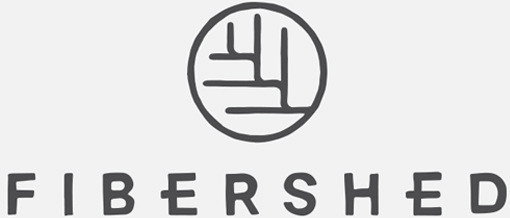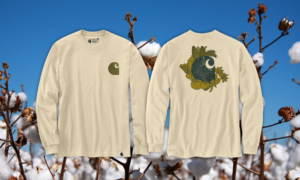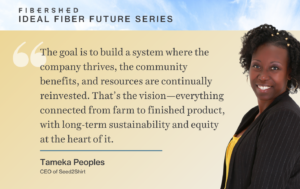
Archived Project: Kentucky Cloth Project
The Kentucky Cloth Project emerges at a time when over 70% of the world’s fiber dependency is based upon the consumption of plastic, otherwise known as polyester. As humans divest from fossil carbon in this era of ‘keep it in the ground’ and there’s an outright necessity of bringing climate consciousness into our material culture, the very nature of our second skin must change. Poised to reinvigorate our relationship with homegrown and compostable natural fibers, a cadre of farmers, designers and community organizers are preparing for the wearers to recognize that our clothes are grown, and the soil is the birthplace of all that nourishes and protects us.
This Kentucky Cloth was grown in the fields of the Berry Farming Program and the pastures of Paris (Kentucky). The cloth is an expression of a land base that was once our nation’s leading producer of hemp—a crop that functioned as the mainstay until tobacco became prominent after the Civil War.
Download the first edition of the Kentucky Cloth Lookbook to learn more.
Hemp has a rich history in Appalachia and it grows well in the summer rain-fed fields, requiring few chemical inputs. Historic figures show 5-12 tons of dried stalk could be harvested per acre, depending on conditions and soil types. Yet, according to a 1920’s USDA account, harvesting and processing hemp was known as one of the ‘most difficult jobs in agriculture.’
Hemp processing continues to pose a challenge to scaling production of bast fiber blended cloth, and Fibershed is exploring the value chain for fiber production, from the first decortication systems developed in the pre-industrial era, through to modern enzyme and economy of scale equipment.
Two blog posts trace the beginnings of this cloth project with a historical lens for regionally-grown and -scaled cloth:
Harvests from Hemp Heroes, written by Erin Axelrod
Hemp Fiber Crop Research Development, written by Rebecca Burgess.
(Photo: courtesy of the Kentucky Hemp Museum)
Kentucky Cloth Textile Recipes
The first edition of Kentucky Cloth serves as the beginning of the creative process and a testament to the iterative engineering of partnerships on the ground. The 40% hemp and 60% wool blend in the initial ‘textile recipe’ for the Kentucky Cloth Project is the result of dedicated farmers, weavers, and processors from soil to cloth, and is well suited for durable goods such as home decor.
A second textile recipe for the Kentucky Cloth Project blends hemp (35%), wool (40%), and alpaca fiber (25%); a lookbook will be released in summer 2017 that includes all of these hemp blended recipe samples.
Learn more about each step of the value chain in the Kentucky Cloth First Edition Lookbook , a document which we invite designers and textile businesses to use as a foundation for developing their own soil-to-soil textiles in collaboration with the farms listed therein, as well as other growers with whom they seek to build relationships.
The Process: from Soil to Cloth
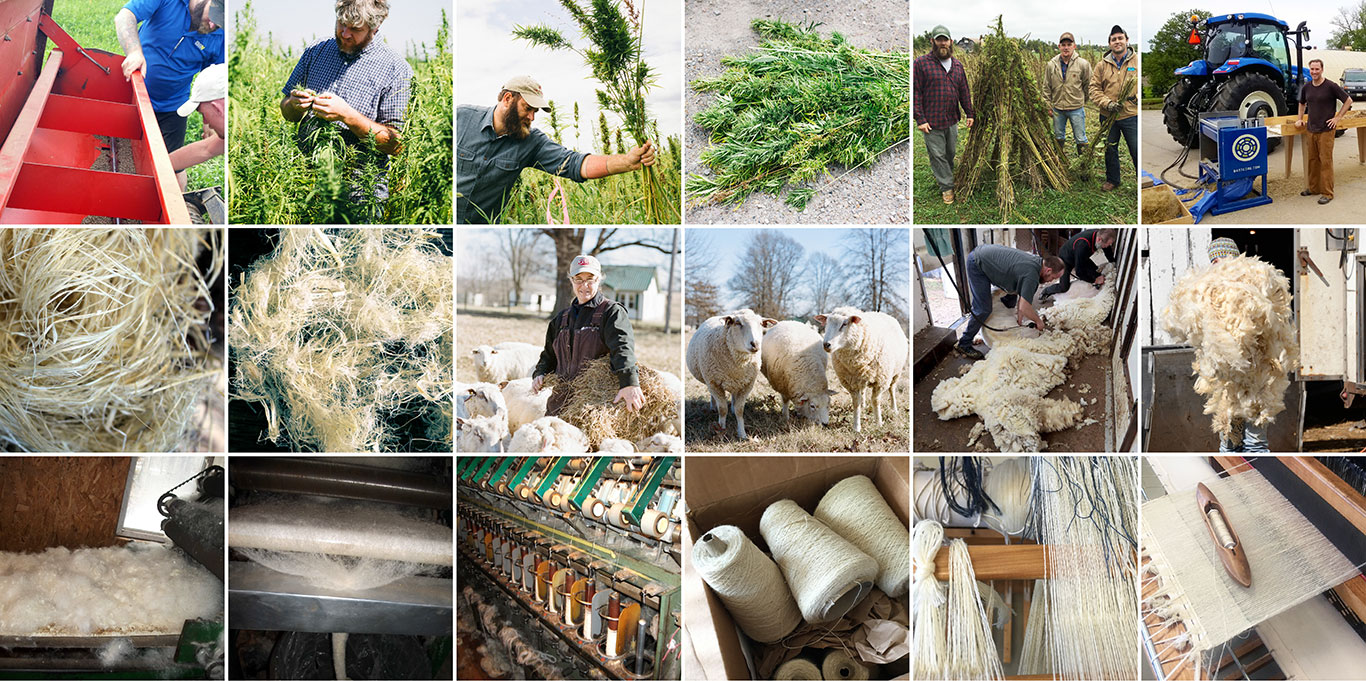
Hemp processing for textiles can be accomplished through human scale appropriate technologies– from dew retting the stalks in the field to utilizing hand breaks, scutchers, and hackling devices. There are also modern methods to separate the fibers like mechanical and electrically powered decorticators, and modern softening systems that use alkali treatments, liquid carbon dioxide, steam explosion, and enzymes. All of the aforementioned have been part of Fibershed’s body of processing research over the last two years. The two key main categorical areas for our exploration have included:
Decortication, which separates the outer, woody part of the stalk from the inner fibrous core.
Degumming, a process that softens the hemp fiber and breaks down the lignin.
Bioregional textile development like the Kentucky Cloth Project offers the opportunity to test and engineer strategies and technologies, from manual decortication like the hemp break created by Growing Warriors, to working with decortication services like BastCore.
While many of the technologies surrounding hemp processing remain under intellectual property rules, our efforts have strived to bring technologies forth that can be open sourced (at best) and decentralized into the communities that need them the most (at minimum). Blueprints for the manual hemp break will be made available in 2017 as part of our effort to open-source community-scale solutions, and cross-pollinate technologies between fibersheds.
(Photos: Rebecca Burgess, left; Meg Wilson, below)
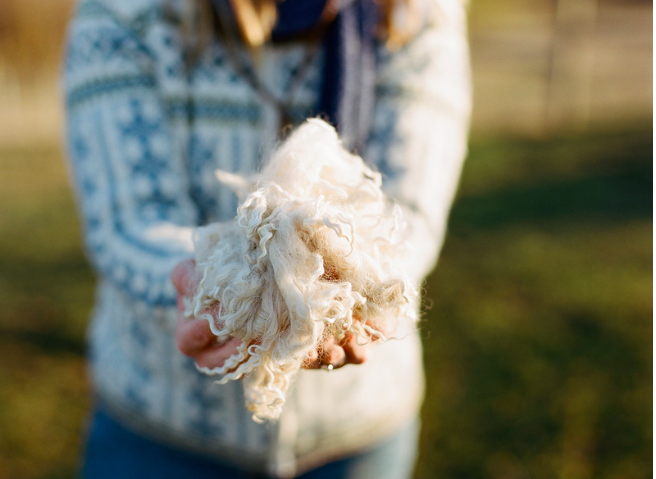
Blending hemp and wool in textile recipes like the Kentucky Cloth Project offers a material path forward at a time when the majority of the worlds textiles are derived from fossil fuel feedstocks. Natural fibers, rooted in the soil instead of fossil carbon, can reduce the carbon footprint of fashion, eliminate microfiber pollution (a rising epidemic due to the shedding of synthetic fabrics in the wash), and offer preferential properties like breathability and durability.
As conscious consumers move forward with divesting from synthetics, innovation in natural fiber blending can invest in fiber systems that build soil health and assist in climate change mitigation. In the Northern California Fibershed, our Climate Beneficial Wool program supports farmers and ranchers in drawing down more carbon from the atmosphere into the soil through carbon farming practices.
What is the role of the natural fiber sector in the Kentucky’s regional economy? In partnership with the Highlander Research and Education Center, and Community Farm Alliance, Fibershed supported Appalachian Transition Fellow Sam Hamlin in assessing the natural textile resource base of Central and Eastern Kentucky. Highlighting narratives of the regional fiber system in Appalachia, and contextualizing the economic impacts of the decline of the US textile industry, the summary report includes a survey of Kentucky natural fiber producers and processors. Woven in Kentucky: An Assessment of the Natural Fiber Textile Sector in Appalachian Kentucky details challenges such as access to capital, hemp regulations, and local marketing efforts, along with opportunities and recommendations for increasing educational opportunities for new and minority farmers, investing in restoring abandoned mine landscapes, increasing plant fiber processing infrastructure, and increasing consumer awareness, and more.
Download and read the full report: Woven in Kentucky
The Kentucky Cloth Project is rooted in the soil and measures the impacts of hemp production on soil carbon and soil organic matter. For more on the science behind regenerative hemp farming, we invite you to read Dr. Shawn Lucas’s white paper on land remediation; check back soon for the full paper.
